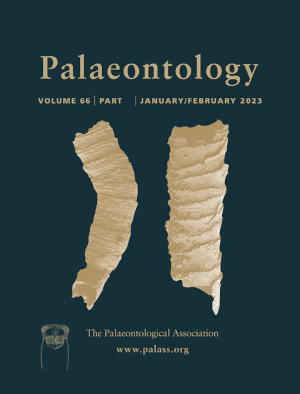Article: Dental microwear texture analysis reveals a likely dietary shift within Late Cretaceous ornithopod dinosaurs
Publication: Palaeontology
Volume:
66
Part:
6
Publication Date:
2023
Article number:
e12681
Author(s):
Tai Kubo, Mugino O. Kubo, Manabu Sakamoto, Daniela E. Winkler, Masateru Shibata, Wenjie Zheng, Xingsheng Jin, and Hai-Lu You
Abstract
Abstract Dinosaurs were the dominant megaherbivores during the Cretaceous when angiosperms, the flowering plants, emerged and diversified. How herbivorous dinosaurs responded to the increasing diversity of angiosperms is largely unknown due to the lack of methods that can reconstruct diet directly from body fossils. We applied dental microwear texture analysis (DMTA), an approach that quantifies microtopography of diet-induced wear marks on tooth surfaces, to ornithopods, the dinosaur clade that includes taxa with the most sophisticated masticatory system. We found that Late Cretaceous ornithopods have significantly rougher dental microwear texture (DMT) compared to pre-Late Cretaceous ornithopods, and DMT variation increased in hadrosaurids, a derived Late Cretaceous ornithopod clade. These changes indicate a likely temporal dietary shift towards more abrasive foodstuffs within ornithopods, probably due to the increased ingestion of phytoliths (amorphous silica bodies in plants). Phytoliths are a main source of rough DMT in modern herbivores, along with exogenous dust and grit, and were generally more concentrated in Late Cretaceous angiosperms than in other major plant groups. Our results show that DMTA of the occlusal enamel surface can be used to reconstruct the diets of herbivorous dinosaurs, with a resolution superior to conventional methods.
